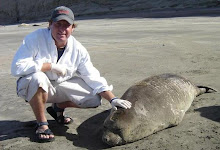



Upon reaching the Rio de la Plata, I will then set out by foot, from Buenos to Tierra del Fuego. And this journey is intended to be shared with you. As often as possible, I will upload blog/vlog posts here and on my wilderness blog Walk on the Wild Side. This will be the first stage of a dream to transform this blog from sideline reporting on wilderness news, to an actual day to day account of walking through the wild.
You can help make this dream a reality by voting online for Patagonia See at the Name Your Dream Assignment contest! Additionally, the expedition is in need of all kinds of support ranging from in-kind donations of website construction, to field gear, to actual monetary donations that will support the travel, science and subsistence costs. Please feel free to direct any inquiries or offers of support or collaboration to me, Arlo Hemphill: arlo@arlohemphill.com
The impetus behind this adventure stems from my belief that our oceans are in dire trouble. One means to combat this crisis is to address human activities on the ocean at the scale of large marine ecosystems, of which the Patagonian Sea represents a distinct unit.

But this adventure is also the culmination of a passion that was instilled in me for the wildlife and landscape of Patagonia. I first visited the region in early 2005 when, as a marine program manager for Conservation International, I was invited down to explore some of the wild coastline. It was love at first sight. And my first visit shortly turned into a regular relationship as a steering committee member on the Forum for the Conservation of the Patagonia Sea and Areas of Influence. The pictures of me included with this post are from that time.
One of my fondest adventures in the region was with Dr. Claudio Campagna, director of the Wildlife Conservation Society's Sea and Sky Program. I joined Claudio on the Peninsula Valdes and with him had the opportunity to track down a tagged southern elephant seal Mirounga leonina using radio telemetry. The young seal in question also wore a satellite tag and our quest was to remove this tag to access the invaluable oceanographic data collected over a season at sea. In the picture above the young female is temporarily incapacitated after being tranquilized for the removal of the device. The photo here to the right was taken on one of Patagonia’s Estancias, which are large shepherding ranches.

The animal in my company is a young guanaco Lama guanicoe, one of South America’s four species of camel. This particular individual was semi-domesticated, living in association with the Estancia. However, these animals range wild throughout this landscape and are bountiful.
Looking ahead, I see the most challenging portion of this trek to be the lower third of the Argentine coast. It is a wild, harsh landscape with low human population density and miles upon miles of trackless, near-desert wilderness. It is this, and the unknown that lies therein, that draws me more than anything. I appreciate your help in moving this adventure forward and I look forward to sharing this time with you through this blog.
Photo Credits: Arlo and elephant seal (Natalia Machain), Maps of Argentina (Forum for the Conservation of the Patagonian Sea and Areas of Influence, www.worldatlas.com, MSN Encarta), Iguaçu Falls (Wikipidia), Arlo and guanaco (Rodolfo "Bubu" Werner)


wonderful blog!!
ReplyDeleteVisit my blog of petitions and help us to make the Earth a better place!
You can find petition for global warming, animal rights, nature´s protetion and etc!